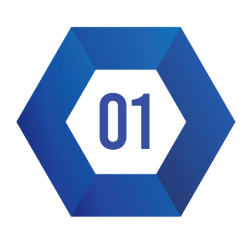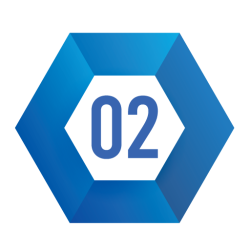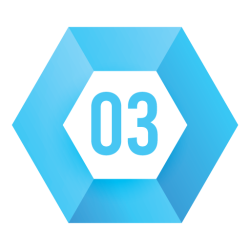Peace-a-Thon
The participants will be required to develop a working solution against any of the problem statements provided. Participants will be provided with problem statements on:
- DNS Abuse
- Secure Telecommunication
- Secure Automation of Automobiles (Cars, Bikes, Aerial Vehicles, UAV)
- Fighting Child Sexual Abuse Materials (CSAM)
- E-waste Management
Competition Phases

Registration
Teams can consist of 1–3 members.
Participants must submit their personal details along with an outline of their proposed solution to a predefined problem statement.
A detailed concept document (PDF/PPT) explaining the proposed solution must also be uploaded during registration.
Elimination
Based on the quality and feasibility of the submitted proposals, the top 10 teams will be selected for the Grand Finale.


Grand Finale
Held as an in-person 36-hour event, where teams will develop a working prototype of their solution.
Completed codebases must be submitted via platforms like GitHub or GitLab for evaluation.
Teams will have 15 minutes to present their solutions to the jury, showcasing their prototypes and explaining their impact.
The top three teams, based on jury feedback and scoring, will be crowned winners.
Problem Statements
Objective: To provide a secure DNS Infrastructure to the community and monitor the real time DNS based threats.
The Domain Name System (DNS) is like a phonebook of the entire internet. Each time a human wants to open a website using a domain name like www.cyberpeace.org, the browser interacts with internet protocol and DNS translates that domain name to its respective IP address so that web browsers can load the web pages.
A standard DNS query that is required for most of the web traffic, creates opportunities for exploitation of DNS like DNS hijacking, Man in the middle attack, DNS cache poisoning, DNS Tunneling etc.
Proposed work: A solution is expected to deploy Public DNS infrastructure across the World with anycast routing, keeping the security first priority in mind to mitigate the DNS threats and DNS based malicious activities. Some key feature should be addressed–
- DNSSEC enabled — DNSSEC is a powerful protocol that protects the client from quack sites.
- Blocks the sites that are believed to be created for malicious or phishing purposes.
- Minimizes the leakage of excessive information about the DNS query.
- Support the anycast routing that mitigates the DoS attacks on DNS.
- Reduces the Round trip delay to maximize the DNS performance.
- An SIEM enabled feature to monitor the real time threats that a DNS infrastructure faces.
Online Child Sexual Abuse Material (CSAM) is a serious problem that is growing exponentially. CSAM is defined as any image or video that depicts a child being sexually abused. This includes material that is traded online between abusers, as well as material that is created by abusers. The production, distribution, and possession of CSAM is a serious crime. The online environment has made it much easier for offenders to produce, distribute and access it.
While the vast majority of people who view CSAM do not go on to commit hands-on child sexual abuse, there is a growing body of evidence that emphasize viewing this material, can lead to harmful behaviours and attitudes. The recent rise in the number of cases of online Child Sexual Abuse Material (CSAM) can be devastating. It is therefore essential that the problem needs to be addressed to prevent CSAM from being created and distributed.
Hey fellow Innovators! What technological solutions can be implemented to stop the flow of these materials and identify the perpetrators whilst ensuring that appropriate action is taken to locate and identify child victims?
Develop an innovative solution to create networks and applications to set up secured telecommunication. A Secure telecommunication network is the need of the hour, with issues like data breach and impersonation many people have fallen victims to phishing scams. The participants are expected to create a dummy spectrum with new technologies and create various other security and surveillance related issues to safeguard the telecommunication.
The participants need to create a framework of cyber security of cars from various attacks and vulnerabilities. The automobile sector is not limited to 4 wheelers only, penetration tests of POC should be shared along with the safeguard for the same. Automation and software oriented vulnerabilities need to be targeted and safeguarded.
Environmental aspect
Objective - Create an Innovative solution to tackle the issue of E-waste.
Problem statement- 1
The world has been riding the wave of automation which has been facilitated by the growth of IoT devices. The manufacturing of these devices is heavily dependent upon the silicon chips.
Due to the global shortage of Silicon chips, all major nations have increased their mining activities, thus causing an issue of top soil erosion which is resulting in damage to crops and loss of agrarian land.
Problem statement - 2
The shortage of silicon chips has led to a slow down of manufacturing of gadgets and accumulation of massive e-waste dumps.
The manufacturing giants and indigenous players need to create an equilibrium for the market in order to sustain manufacturing of electronic devices.
Guidelines
- All participants must join the slack channel, a link to join will be provided on the dashboard.
- Each team leader has to register and join the GCC 4.0 Dashboard for all GCC 4.0 related actions.
- Each team leader can update/change team member’s details 24 hours prior to the closing of registration.
- Defaulting to providing mandatory information.
- All participants are required to carry a Government ID (Passport for foreign Nationals) for verification purposes.
- It will be a traditional type of Innovative Hackathon where participants will be given problem statement(s) specified on the official website of GCC4.0.
- Participants need to develop a working solution to address real world problems.
- Participants can participate either in a team format or as an individual. Each team will have a maximum number of 3 participants.
- Participants need to wireframe the entire thing, some key features.
- Working procedures should be mentioned along with proper life cycle visualization and functionality.
- It is mandatory to mention the coding and technologies or any special framework, libraries contestants have used. For any coding sample it is to be checked if the code sample is well-commented that anyone can understand what is the usability of that particular piece of code.
- The marking procedure depends on how much the innovation is towards the actual theme of the competition.
- Top 10 Participants will be shortlisted for the Grand Finale in the first round on the basis of the submitted entries.
- Grand finale will be hosted for 36 hours. Top 3 teams will be awarded.
